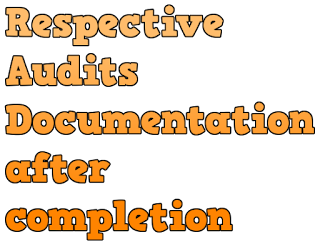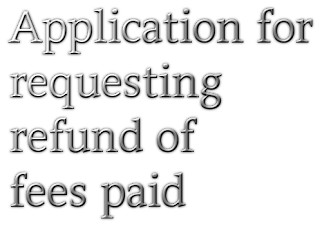Source: OPGC & IncomeTaxIndia
Paragraph A
(I) In the case of every individual other than the individual referred to in items (ii) and (iii) of this Paragraph or Hindu undivided family or association of persons or body of individuals, whether incorporated or not, or every artificial juridical person referred to in sub-clause (vii) of clause (31) of section 2 of the Income-tax Act, not being a case to which any other Paragraph of this Part applies,—
Rates of income-tax
(1) where the total income does not exceed Rs. 2,50,000 Nil;
(2) where the total income exceeds Rs. 2,50,000 but does not exceed Rs. 5,00,000 10 per cent of the amount by which the total income exceeds Rs. 2,50,000;
(3) where the total income exceeds Rs. 5,00,000 but does not exceed Rs. 10,00,000 Rs. 25,000 plus 20 per cent of the amount by which the total income exceeds Rs. 5,00,000;
(4) where the total income exceeds Rs. 10,00,000 Rs. 1,25,000 plus 30 per cent of the amount by which the total income exceeds Rs. 10,00,000.
(II) In the case of every individual, being a resident in India, who is of the age of sixty years or more but less than eighty years at any time during the previous year,—
Rates of income-tax
(1) where the total income does not exceed Rs. 3,00,000 Nil;
(2) where the total income exceeds Rs. 3,00,000 but does not exceed Rs. 5,00,000 10 per cent of the amount by which the total income exceeds Rs. 3,00,000;
(3) where the total income exceeds Rs. 5,00,000 but does not exceed Rs. 10,00,000 Rs. 20,000 plus 20 per cent of the amount by which the total income exceeds Rs. 5,00,000;
(4) where the total income exceeds Rs. 10,00,000 Rs. 1,20,000 plus 30 per cent of the amount by which the total income exceeds Rs. 10,00,000.

(III) In the case of every individual, being a resident in India, who is of the age of eighty years or more at any time during the previous year,—
Rates of income-tax
(1) where the total income does not exceed Rs. 5,00,000 Nil;
(2) where the total income exceeds Rs. 5,00,000 but does not exceed Rs. 10,00,000; 20 per cent of the amount by which the total income exceeds Rs. 5,00,000;
(3) where the total income exceeds Rs. 10,00,000 Rs. 1,00,000 plus 30 per cent of the amount by which the total income exceeds Rs. 10,00,000.
Surcharge on income-tax
Click here & go to official circular Page CBDT circular
Paragraph A
(I) In the case of every individual other than the individual referred to in items (ii) and (iii) of this Paragraph or Hindu undivided family or association of persons or body of individuals, whether incorporated or not, or every artificial juridical person referred to in sub-clause (vii) of clause (31) of section 2 of the Income-tax Act, not being a case to which any other Paragraph of this Part applies,—
Rates of income-tax
(1) where the total income does not exceed Rs. 2,50,000 Nil;
(2) where the total income exceeds Rs. 2,50,000 but does not exceed Rs. 5,00,000 10 per cent of the amount by which the total income exceeds Rs. 2,50,000;
(3) where the total income exceeds Rs. 5,00,000 but does not exceed Rs. 10,00,000 Rs. 25,000 plus 20 per cent of the amount by which the total income exceeds Rs. 5,00,000;
(4) where the total income exceeds Rs. 10,00,000 Rs. 1,25,000 plus 30 per cent of the amount by which the total income exceeds Rs. 10,00,000.
(II) In the case of every individual, being a resident in India, who is of the age of sixty years or more but less than eighty years at any time during the previous year,—
Rates of income-tax
(1) where the total income does not exceed Rs. 3,00,000 Nil;
(2) where the total income exceeds Rs. 3,00,000 but does not exceed Rs. 5,00,000 10 per cent of the amount by which the total income exceeds Rs. 3,00,000;
(3) where the total income exceeds Rs. 5,00,000 but does not exceed Rs. 10,00,000 Rs. 20,000 plus 20 per cent of the amount by which the total income exceeds Rs. 5,00,000;
(4) where the total income exceeds Rs. 10,00,000 Rs. 1,20,000 plus 30 per cent of the amount by which the total income exceeds Rs. 10,00,000.

(III) In the case of every individual, being a resident in India, who is of the age of eighty years or more at any time during the previous year,—
Rates of income-tax
(1) where the total income does not exceed Rs. 5,00,000 Nil;
(2) where the total income exceeds Rs. 5,00,000 but does not exceed Rs. 10,00,000; 20 per cent of the amount by which the total income exceeds Rs. 5,00,000;
(3) where the total income exceeds Rs. 10,00,000 Rs. 1,00,000 plus 30 per cent of the amount by which the total income exceeds Rs. 10,00,000.
Surcharge on income-tax
Click here & go to official circular Page CBDT circular
 Example format:
Example format:







